*** Proof of Product ***
Exploring the Essential Features of “The New Investment Superstars: 13 Great Investors and Their Strategies for Superior Returns – Lois Peltz”
Learn how these superstars invest, where they invest, what works–and what doesn’t
Since people have been making money in the markets, investors and would-be investors have been fascinated with the money managers and traders who have extracted superior returns. In The New Investment Superstars, Lois Peltz examines fifteen of today’s most successful investors by their area of expertise, including stock-picking, global macro trading, sector investing, and more. Readers will learn how these great investors approach the markets at a time when volatility is high and certainty low. From the thirty-five-year-old Lee Ainslie (Maverick Capital), dubbed the “Win-Win Investor” by Worth magazine, and Ken Griffin, the thirty-one-year-old who started his first hedge fund as a freshman at Harvard, to Lee Cooperman, long a star stockpicker at Goldman, we meet today’s superior managers and learn how they do it.
Peltz reveals that these new stars are flexible traders who inherently understand that long-term wins come from recognizing that markets are ever-changing and that they must adapt. By reading about how they’ve succeeded and where they lost, investors will learn about market change, and how success is achieved.
Editorial Reviews
From the Inside Flap
They are the elite, the crème de la crème, the Mozarts and da Vincis, the Einsteins and Michael Jordans of today’s investment world. From among the thousands of hedge fund managers, they are the ones who, over the past decade, have risen above the rest to distinguish themselves. Although they are a diverse group in terms of age, background, investment strategy, and area of expertise, they all share an unquenchable passion for what they do and an undeniable genius for generating consistently high returns, year after year, under all conditions.
Now, The New Investment Superstars provides you with a unique opportunity to get to know these market masters and learn the original investment strategies they have used in many markets to outperform their peers.
From thirty-five-year-old Lee Ainslie (Maverick Capital), dubbed the “Win-Win Investor” by Worth magazine, to Leon Cooperman (Omega Advisors), Goldman Sachs’ longtime star stockpicker, to the “trader’s trader,” David Tepper (Appaloosa Management), you’ll meet today’s top market movers and find out what makes them tick. Through a series of in-depth profiles, author Lois Peltz takes you inside their minds and their organizations. She reveals what motivates them and how they think. And she showcases their methods and examines what has worked for them in the past and what hasn’t, what is working for them now and what isn’t.
The thirteen managers featured in The New Investment Superstars were selected on the basis of a few basic criteria: Each manages at least $1 billion in assets, and each has matched or outperformed the S&P for at least seven years. Each is acknowledged by the investment community to be the best in a particular area of expertise-including stock-picking, global macro trading, sector investing, merger arbitrage, and eventdriven investing. And, as Lois Peltz reveals, each, throughout his or her career, has displayed an uncanny ability to adapt swiftly and decisively to changing market conditions.
In the final chapters, Peltz examines the new superstars from the other side of the equation-the investor’s point of view. Working from interviews, she explores how well these new superstars have performed for institutions such as CalPERS, Swiss Life Insurance, and a large Japanese institution; for major endowments-including Stanford University, Wesleyan University, and Vassar College; and for private investors.
From the Back Cover
Praise for The New Investment Superstars
“Lois Peltz’s profiles of these outstanding money managers are interesting, insightful, and comprehensive. For anyone who is a serious investor in hedge funds, this book is invaluable.”-Richard Elden, Chairman, Grosvenor Capital Management, LP
“Having access to the insights and analytical skills of Lois Peltz is like gaining entry into a great hedge fund after it has closed to new investors! Far too little has been written about hedge funds, and all too often private investors are fooled by the hype or mystified by the wildly disparate data on performance and categories. Lois has a journalist’s insatiable curiosity and a financial professional’s depth of knowledge. That combination makes for a fascinating read.”-Charlotte B. Beyer, founder and CEO, Institute for Private Investors
“Well researched and illuminating. A must-read for serious institutional and high net worth investors. Perceptive insights into the minds and strategies of a gifted baker’s dozen of superior hedge fund managers.”-Lawrence Simon, President and Chief Executive Officer, Ivy Asset Management Corp.
“Lois Peltz offers fascinating insight into the hedge fund world and some of its key figures. The New Investment Superstars gives a fair and accurate description of some of the key events and individuals of recent years. This book should provide investors with enough insight to stop them from ‘having to sleep with the lights on at night’ worrying about some of these almost mythical figures in the business.”-David Smith, Chief Investment Director, Global Asset Management
About the Author
LOIS PELTZ is President and Chief Executive Officer of Infovest21, an information services company servicing the alternative investment industry. For eight years prior to forming Infovest21, she was managing editor of MAR, the publisher of MAR/Hedge and MAR/Sophisticated Investor Strategies newsletters.
Excerpt. © Reprinted by permission. All rights reserved.
The New Investment Superstars
13 Great Investors and Their Strategies for Superior ReturnsBy Lois PeltzJohn Wiley & Sons
Chapter One
THE WATERSHED EVENTS OF 2000
Julian Robertson of Tiger Management and George Soros of Soros Fund Management had long been recognized as the great hedge fund managers. For many years, Soros had been the largest hedge fund manager as determined by assets under management; but in 1998, Robertson’s assets overtook Soros’s. At their peaks, both had assets of about $22 billion.
Both men had long and successful track records. Soros started his fund in 1969 and Robertson in 1980. Both evolved into global macro managers-those managers who take advantage of opportunities around the world and invest in a variety of instruments including stocks, bonds, commodities, currencies, and futures, and typically take large leveraged positions.
By midyear 2000, the situation had changed drastically. Robertson had retired and Soros had significantly changed his organization and fund objectives.
TIGER UNRAVELS
I met Julian H. Robertson Jr. for the first time in August 1998. We had breakfast in his office on the top floor of 101 Park Avenue. He fit the image of the Southern gentleman that I had heard about so often. During the breakfast, he mentioned the problems that he had with Business Week. (Business Week wrote an April 1996 cover piece on him called “The Fall of the Wizard of Wall Street.” It focused on his results in 1994 and 1995. The following March, Robertson initiated a libel lawsuit in New York State courts against Business Week; McGraw-Hill, the publisher of the magazine; Gary Weiss, the author of the story; and Stephen Shepherd, the editor of Business Week, seeking to recover $1 billion in damages. The suit was dropped in December 1997 after the magazine ran an editor’s note saying its predictions about Tiger’s future performance were not borne out by subsequent results. No payment was made.) It was still obviously a point of contention.
At our breakfast, Robertson had agreed to speak via satellite broadcast to a conference to be held in Bermuda on October 12, 1998. As it turned out, on October 7, a few days before the scheduled speaking engagement, Robertson suffered a $2 billion loss on the surge of the Japanese yen against the U.S. dollar. Despite this setback and the gloomy atmosphere that prevailed in the markets, Robertson held to his promise and spoke to the conference via satellite. This was a man of integrity. I knew this speaking engagement was not the most important thing to him at the moment. Nevertheless, he had promised and he kept his word. Many other managers would have canceled without a second thought.
Most of the satellite broadcast was questions and answers. The audience-mostly managers and other industry professionals-had been shaken by the recent events of the Russian government bond default in August and Long-Term Capital Management’s bailout in late September. Robertson did not provide too many details in his answers, but his answers were telling in the events that eventually unfolded. He also provided a sense of security and comfort to the industry.
He talked honestly and openly. “I feel very much like a batter who hasn’t had a hit at the last 15 to 20 times at bat…. You worry about a slump even if you have confidence in yourself.” He discussed heavy industry redemptions in general due to the somber atmosphere caused by recent events.
He alluded to his lack of knowledge in technology-this was not an area in which he was strong. In response to a question on the proliferation of hedge fund information on the Internet, he said he was totally computer illiterate and couldn’t get into the Internet if he tried. While he didn’t provide details at that time, it was later released in press reports that the next year, 1999, he had short positions in telecommunications equipment and technology-Lucent Technology and Micron Technology. He was highly skeptical of most Internet valuations. He eventually hired Thomas Kurlak, a former Merrill Lynch semiconductor analyst, in February 1999. As a managing director of technology research, Kurlak had been at Merrill Lynch for about 20 years.
I was particularly struck by his answer to the question on what motivates him. “Unlike Wall Street this week, this is really a fun business. I think most of us in it would almost work for free. That’s the big motivation in it. I like to compete in it. These are the things that make it fun for me. Reflecting on my colleagues and competitors, they are a fine group of people in the business, and it’s fun to be associated with all of them.”
One of the last questions concerned his stock picks. He mentioned US Airways as well as a number of financial stocks which he found attractive, such as Bear Stearns, Wells Fargo, Morgan Stanley, and Bank of America.
North Carolina Beginnings
Robertson was born in Salisbury, North Carolina. His father was a role model who passed on his fascination with investments to his children. At 90, Julian Sr. was still active running a textile mill for the Erlanger family of New York City. One of his hobbies was stocks, and he was an active investor after the Crash of 1929. When the Erlangers were convinced that the markets would recover, they lent Julian Sr. money to invest.
“I still remember the first time I ever heard of stocks. My parents went away on a trip and a great aunt stayed with me. She showed me in the paper a company called United Corp., which was trading on the Big Board and selling for about $1.25. And I realized that I could even save up enough to buy the shares. I watched it. Sort of gradually stimulated my interest.” He was six at the time.
After graduating from the University of North Carolina with a degree in business administration, Robertson had a stint in the Navy and afterward joined Kidder Peabody, where he stayed for 20 years. For most of those years he was a stockbroker and then he headed up Webster Management, the money management unit.
He started Tiger Management in May 1980 with $8 million-$2 million of his own money and $6 million from outside investors. By 1991, the firm approached $1 billion in assets under management. At its peak in October 1998, Tiger assets reached $22.8 billion, making it the largest-ever hedge fund.
There were six funds in total-all named after cats: Tiger was a fund for U.S. investors, while Jaguar was for non-U.S. investors, plus tax-exempt U.S. foundations and institutions. Ocelot, a deal Tiger did with Donaldson, Lufkin & Jenrette (DLJ), had a 4 percent up-front fee, a five-year lock-up, and a $1 million minimum investment. About $2 billion in assets were raised with assets locked up through July 2002. Lion, a relatively new fund, was a clone of Tiger. Panther investors who were not qualified persons could gain access through Lion. Panther was dissolved in June 1997. Puma was for U.S. investors, as was Panther.
Investment Strategy
Robertson bought and sold stock on fundamentals. He used short selling and index put options to hedge. To manage risk and diversify, he had a large number of positions.
His investment credo was summed up well in a 1990 Business Week article. First, stick to the fundamentals. Buy stock as if you were buying the company. Get to know its products and management. Second, put away the crystal ball. Don’t try to time the market-but stay hedged through shorting stock and options to guard against a market downturn. Third, don’t stop at the border. Keep a global perspective. Overseas stocks are areas of boundless opportunity on the long and short side. Fourth, if you’re wrong, sell. Keep losses to a minimum. Sell before the losses become excessive. Fifth, short frogs if the public thinks they’re princes. Sell a stock short if it is overpriced and public has a misconception of it.
Robertson was the one who made the investment decisions at Tiger. He has always been known for his stock-picking skill. His team of analysts gave him qualitative and quantitative information, but he was the main decision maker. At its peak, Tiger had about 30 analysts/portfolio managers providing recommendations. They were located in London, Tokyo, and Washington, DC, as well as the New York City office.
Succession Planning
In 1991, Robertson talked to bankers about selling a stake of Tiger. Nothing developed. In 1997, he again was considering selling an equity stake to a strategic partner. Other possibilities were issuing preferred stock or selling participation in Tiger’s stream of revenue that might include a payment method.
In 1998, Robertson hired Philip Duff, a former Morgan Stanley chief financial officer, as chief operating officer. One of Duff’s objectives was to help map out a succession plan and give the firm more structure.
In August 1998, Tiger lost $600 million when Russia defaulted on its debt. Tiger also got hit with a $2 billion loss on the Japanese yen later in 1998. Robertson refocused from the global macro mode to the strategy he did best-stock picking. Robertson followed a value approach-buying stocks at low prices and with good earnings prospects. Undervalued stocks included airline, automobile, and paper stocks of the Old Economy.
While the firm owned stock in Microsoft and Samsung Electronics, it steered clear of high-flying Internet stocks without earnings. According to SEC filings, at the end of 1999 Tiger owned a 24.8 percent stake in US Airways, 14.8 percent of United Asset Management, 7.2 percent of Sealed Air, and 3.7 percent of Bear Stearns. As Robertson stuck by Old Economy stocks, his performance lagged soaring technology stocks that attracted younger managers.
Redemptions were hurting; he had to sell holdings from his portfolio to meet redemptions. A vicious circle was created. Selling holdings hurt performance, which led to more redemptions, and so on. Between August 1998 and April 2000, $7.65 billion had been withdrawn. In October 1999, Tiger announced that it would no longer redeem assets on a quarterly basis, but starting in March 31, 2000, it would allow redemptions twice a year.
Tiger had approximately 180 employees. While Robertson lost about 25 analysts in 1999/2000, he hired 15. By that time, some structure existed. There was a core of 12 senior analysts who comprised 10 industry teams, a currency and bond team, and a commodity team.
At Tiger’s annual meeting in October 1999, when these key changes were announced, Robertson also revealed that he had lowered the amount he borrowed in stocks from 2.8 times capital to 1.4 times.
But on March 31, 2000, Robertson announced he was retiring; he was 67 years old. By that time, assets in the six hedge funds had dwindled to $6 billion, of which $1.5 billion was his own. He wrote to investors: “There is no point in subjecting our investors to risk in a market which I frankly do not understand…. After thorough consideration, I have decided to return all capital to our investors, effectively bringing down the curtain on the Tiger funds.” At the time of the announcement, the funds were down about 14 percent. For 1999 as a whole, Tiger funds fell 19 percent. Tiger’s average annual performance since it began trading through 2000 was about 25 percent.
Investors received about 75 percent of their money in cash and 5 percent in shares still held by Tiger. The remaining 20 percent came in cash as Robertson gradually sold his five largest holdings-US Airways, United Asset Management, Xtra Corp., Normandy Mining Management, and Gtech Holdings.
Robertson is still managing his own money, approximately $1.5 billion to $2 billion.
Robertson remains an avid skier, tennis player, and golfer. He recently set up a new golf course at Kauri Cliffs in New Zealand. He has devoted considerable time and resources to charity. Robertson launched the Tiger Foundation in 1989 with the goal to support nonprofit organizations serving disadvantaged youth and families in New York City. He also set up a charitable foundation named for his father in Salisbury, North Carolina, in which $3.5 million was donated to educational community development health programs. Both Duke University and the University of North Carolina received a $25 million gift. He also donated $25 million for Lincoln Center’s fountain in honor of his wife, Josie.
THE SOROS SAGA
Soros’s Quantum empire also started to unravel in 2000. Soros Fund Management had massive losses in March/early April 2000. Quantum, the flagship fund, was down 32 percent. In contrast, Quantum had generated an annual average return of 36 percent since inception.
While it did not close as Robertson’s did, it underwent tremendous change. A number of key people left. Stanley Druckenmiller, 47, who had been the chief investment officer for the Quantum Fund for 12 years, and Nicholas Roditi, 54, who had managed the Quota Fund, left. The retirement announcement for both came on April 28, 2000. When Soros announced the reorganization of his then $14 billion fund group, the flagship Quantum Fund was down 20 percent for 2000. Investors redeemed about $3 billion when Druckenmiller announced his departure.
Soon after the retirement announcement, other key employees decided to leave: Duncan Hennes, chief executive officer, and Peter Streinger, chief financial officer, announced their departures. Scott Bessent, a 10-year veteran who managed the $1.5 billion of non-U.S. stocks in London, left on June 30, 2000, to form Bessent Capital. Walter Burlock, who had been a managing director since 1990, left to start Origin Capital Management. Carson Levit joined Pequot Capital and Michael Karsh formed Karsh Capital, while David Kovitz and Sheldon Kasowitz set up Indus Capital Management.
Soros’s reason for the reorganization was that the fund had become too large. Furthermore, the objectives of the Soros funds changed. Going forward, Quantum would use lower-risk strategies. Soros instituted a more conservative approach to trading. “In my old age, I have become more conservative. Using less leverage is what I want…. It’s less risk. I’m looking for 15 percent returns, not 30 percent returns.”
On July 1, Soros merged Quantum Fund and Quantum Emerging Growth Fund into a new, $6.5 billion fund, Quantum Endowment Fund. The fund allocates about half to less volatile macro and arbitrage strategies, and the other half of the assets are devoted to stock picking on the long and short side. The fund uses less leverage and aims for more stable returns of about 15 percent. Leverage is now only about 33 percent compared with as much as 100 percent of equity previously.
About 60 percent of the Quantum Endowment Fund is Soros’s own money. Some assets are managed inside the firm and some managed outside. When Bessent started his firm with about $1 billion, it was reported that $150 million came from Soros.
Continues…
Excerpted from
The New Investment Superstars
by
Lois Peltz
Excerpted by permission.
All rights reserved. No part of this excerpt may be reproduced or reprinted without permission in writing from the publisher.
Excerpts are provided by Dial-A-Book Inc. solely for the personal use of visitors to this web site.
Product details
Publisher : Wiley; 1st edition
Language : English
Hardcover : 286 pages
Customer reviews
Rolf Dobelli
Insightful!
Lois Peltz has stolen the keys to Wall Street’s inner sanctum and is waving you over to take a peek inside. Her insights on the hedge fund money machine – how it works, who runs it and how – should enthrall insiders and outsiders alike. She begins with the grand old gentlemen of the game, the likes of Julian H. Robertson Jr., Michael Steinhardt and George Soros, and tells how Soros speculated his way to a $2 billion profit – in one day! She shows how the game is played, and gives an insider’s perspective on the methods of the new superstar managers. The in-depth profiles include: Lee Ainslie, Leon Cooperman, Ken Griffin, John Henry, Mark Kingdon, Bruce Kovner, Daniel Och, Raj Rajartnam, Paul Singer and Brian Stark. These managers will build the vast fortunes of the future – while also amassing their own. We […] encourage investors, Wall Street players and interested spectators to hedge their bets, and buy this book.
Angus McKinnon
Useful background detracted by gross errors
Contains useful background information and insights on managers, and the industry though it is of limited use regarding the strategies those managers use. Two really glaring errors (page 48 & 49 on incentive fees, and Page 65 on correlations – perhaps a misquote or a quote out of context) cast doubt on the reliability of other statements in the book for me. Consequently I recommend reading it, but with more than the usual level of skepticism.
Please see the full list of alternative group-buy courses available here: https://lunacourse.com/shop/


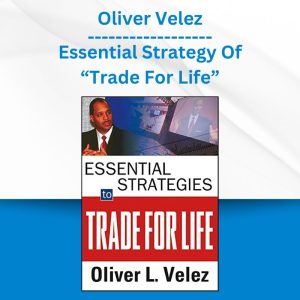
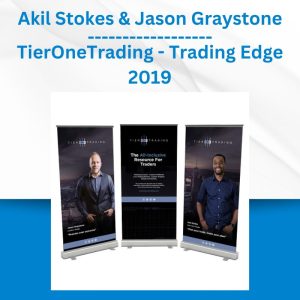
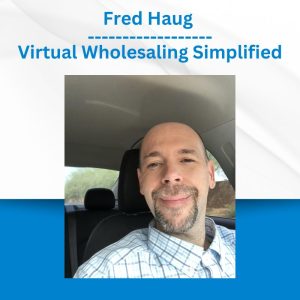


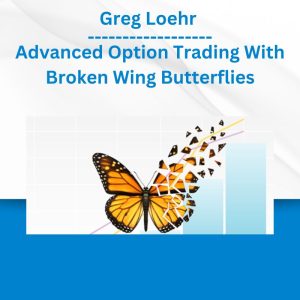


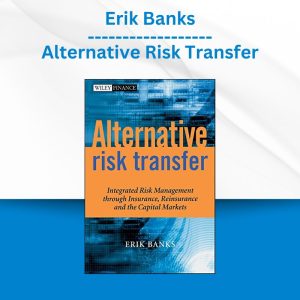 Erik Banks - Alternative Risk Transfer
Erik Banks - Alternative Risk Transfer 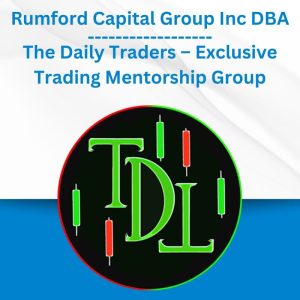 The Daily Traders – Exclusive Trading Mentorship Group
The Daily Traders – Exclusive Trading Mentorship Group